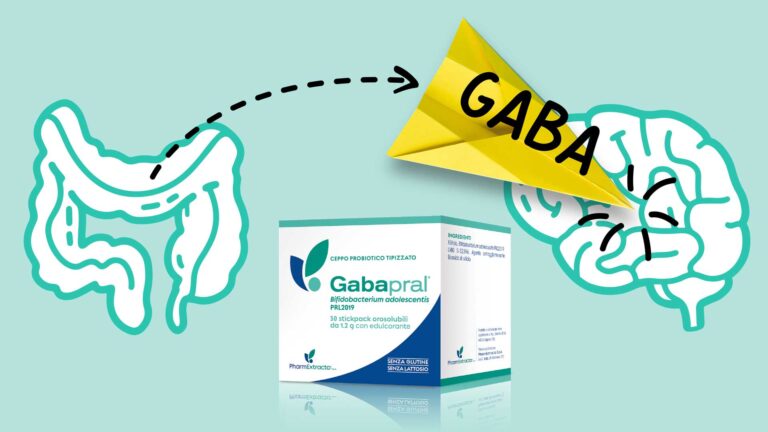
Gabapral®: new precision psychobiotic that increases GABA production
GABA is an inhibitory neurotransmitter in the brain that helps regulate anxiety and stress responses. It is believed that increasing GABA levels in the brain may have a calming effect on the nervous system and potentially reduce anxiety and stress.
GABApral® is a new psychobiotic containing Bifidobacterium adolescentis PRL2019, a very unique strain that has shown a high capability of producing GABA both in vitro and in vivo and can therefore offer a help to individuals dealing with chronic anxiety, stress or associated problems.
The role of GABA in CNS
Gamma-aminobutyric acid (GABA) is the chief inhibitory neurotransmitter in human central nervous system: it is released by certain neurons and then reduces the activity of the neurons to which it binds.
Because of this ability, GABA is used by the brain to promote calm and is thought to be helpful in managing stress and has been recently studied for its role in anxiety, sleep and other neurological problems.
Recently, the existence of bacteria capable of influencing the functioning of the host’s CNS by producing GABA, has been described. Scientists state that GABA may be the only neurotransmitter produced by gut microbiota that can reach CNS while other neurotransmitters are unable to get there or simply act as precursors .
This means that increasing the presence of GABA producing bacteria in the intestinal site may result in increased GABA availability in the CNS.
Searching for a GABA-producing bacterial strain
Recent studies revealed that among all good bacteria bifidobacteria exhibit the highest GABA-producing capacity. Starting from this evidence, a recent Italian study published in a journal of the Nature group, analysed the genome of a total of 1,022 strains of bifidobacteria, assessing the presence of the genes linked to GABA metabolism:
- GadB, which encodes glutamate decarboxylase that catalyses the conversion of glutamate to GABA
- GadC, which mediates export of GABA in exchange for glutamate.
The results showed that the strains with the highest conservation of these genes were those belonging to the Bifidobacterium adolescentis species, while B. adolescentis PRL2019 was identified as the most efficient GABA-producing strain, being able to convert more than 65% of glutamate into GABA and showing in its genome the highest ability of expressing GadB and GadC genes among all the bifidobacteria analysed.
What’s best is that the GABA produced in the gut can reach the CNS via the vagus nerve and therefore it is able to produce its typical calming effect.
Bifidobacterium adolescentis PRL2019: in vivo evidence
The activity of B. adolescentis PRL2019, which emerged in experiments conducted in vitro, was also tested in vivo on rats. These were divided into three groups, each of them assigned to one of the following supplementations:
- Bifidobacterium adolescentis PRL2019
- another high GABA-producing adolescentis strain
- a non-GABA-producing adolescentis
A group of untreated subjects served as control. The aim was to evaluate the colonizing capacity of the B. adolescentis strains and their efficiency in producing GABA in vivo.
The results obtained show a high colonizing capacity of B. adolescentis PRL2019 and, in correlation, a significant increase in GadB and GadC gene expression.
Regarding the primary endpoint of the study, the results show that GABA production doubled in the PRL2019-supplemented group already after 7 days of supplementation, demonstrating how this bacterial strain, with this in vivo evidence, keeps the promise revealed by in vitro data.
The ability of B. adolescentis PRL2019 to produce GABA was made clear by this study. Anyway, further studies will be carried out to support these findings.
In particular, the supplementation with Gabapral®, containing this very special strain, will be soon evaluated in a clinical trial for its possible efficacy in helping resolve Recurrent abdominal pain in children.
